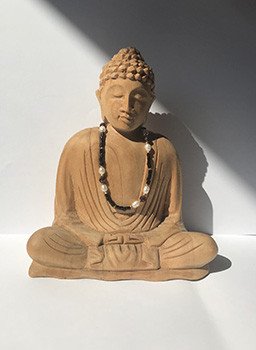Ancient Jewelry: What a 1000 B.C. Necklace Teaches Us About Timeless Design
A necklace from 1000 B.C. at the Met shows how ancient jewelry combined function, beauty, and spiritual power. Discover the eternal language of design still relevant today.
Jewelry with ancient soul: What a 1000 B.C. necklace teaches us about timeless design
In the collection of the Metropolitan Museum of Art in New York, there is an ancient necklace that, although discreet at first glance, holds thousands of years of history in its beads. This historic piece, made around 1000 B.C. with carnelian beads, comes from the ancient Near East and is a fascinating example of how jewelry design can withstand the test of time with grace and symbolic power.
The timeless beauty beyond fashion
Unlike earrings, which have been more influenced by gender trends through the centuries, ancient necklaces like this were originally unisex, worn equally by men and women. In many ancient cultures, wearing precious stones was not just about aesthetics: it was a spiritual, protective, and even political act.
Carnelian, with its warm tones ranging from amber to deep red, was considered a protective gemstone, symbolizing life and energy. Its color evoked blood and the sun, associated with vitality, rebirth, and connection to the divine. It’s no wonder it was one of the favorite ancient gems of Egyptians, Mesopotamians, and Persians.
What precious stones were used in antiquity?
Besides carnelian, ancient people highly valued stones such as lapis lazuli, turquoise, garnet, and jasper. Each had symbolic meaning and ritual use. Lapis lazuli, for example, was reserved for pharaohs and gods in Egypt, while turquoise was used as a protective talisman in Persia and the Indus Valley. These ancient gemstones were not just for adornment but spoke of power, status, and spirituality.
What were the most popular ancient jewelry pieces?
Beaded necklaces, rigid bracelets, seal rings, and dangling earrings were among the most common jewelry designs. But what makes these ancient pieces special is their purpose: beyond decoration, they were amulets, symbols of connection with the gods, and even social identifiers. Pieces like the Met necklace show how ancient jewelry design can be deeply functional, emotional, and eternal.
Why carnelian?
A technical curiosity: carnelian is a hard gemstone but relatively easy to drill, compared to other minerals like lapis lazuli or turquoise. This made it a favorite among ancient artisans, who used rudimentary tools to shape and perforate the tiny beads. Its durability also made it ideal for everyday wear.




Comments
Leave your comment